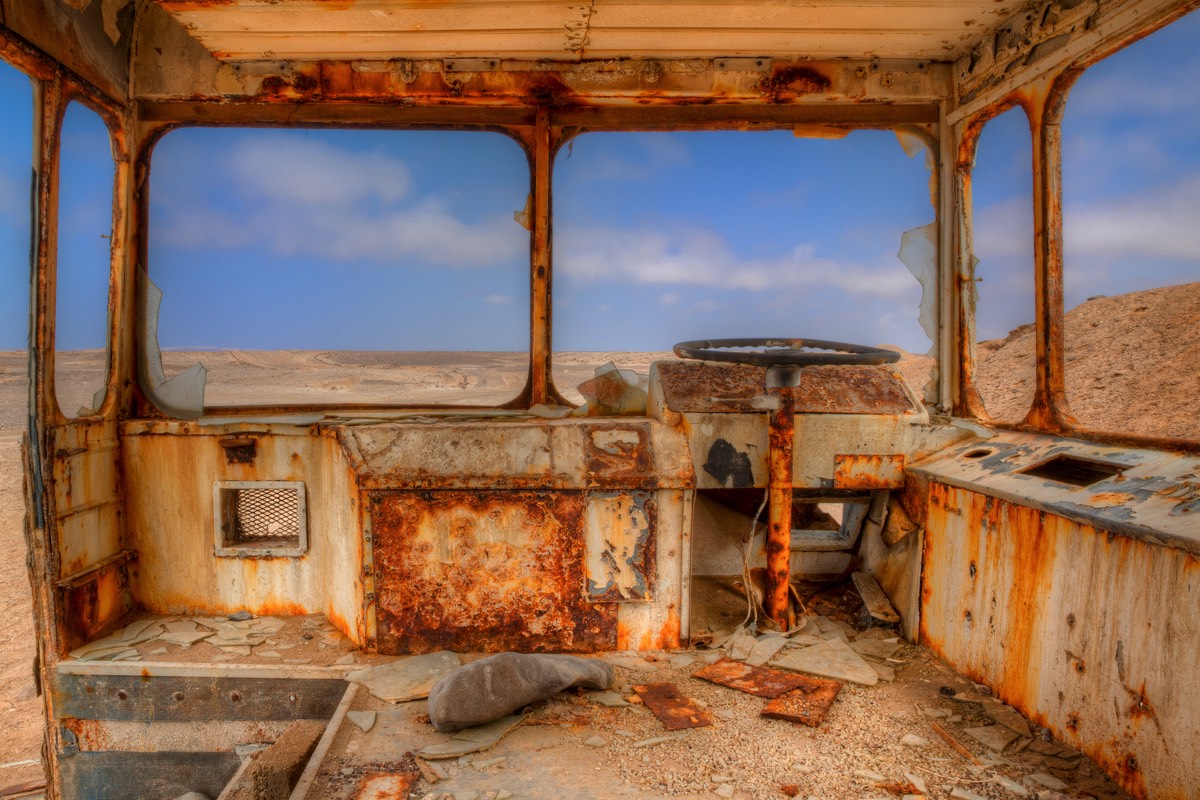The Skeleton Coast
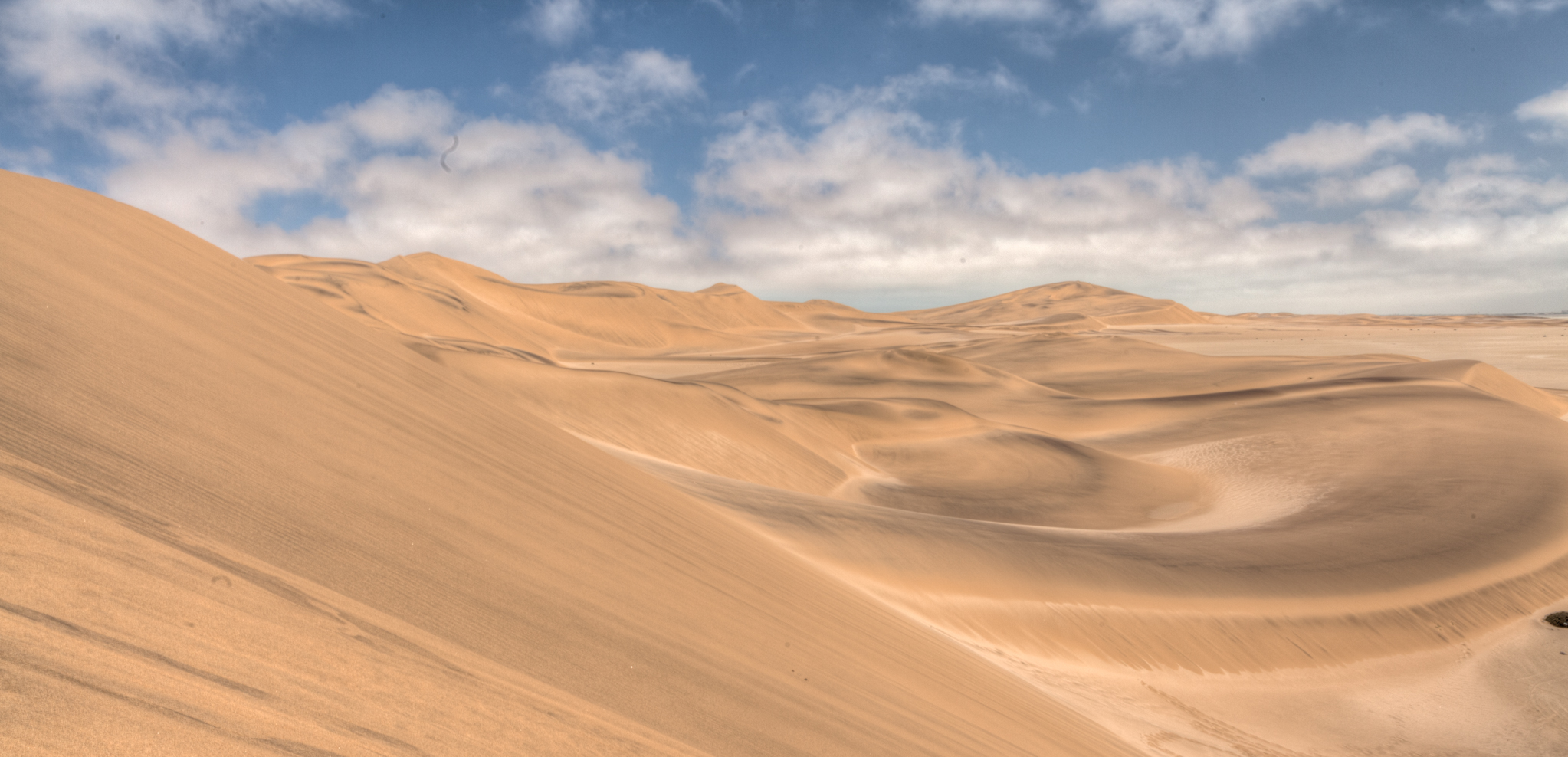
The name conjures a frisson of excitement tinged with fear. Very Indiana Jones! It refers of course to the notorious history of centuries of shipwrecks on this coast, and the poor chances of survival even if you made dry land. This desert comes right up to the coast with miles of sand dunes and gravel plains. The vegetation is sparse and highly adapted, huddled in fingers of dry and secret river beds and gullies.
Namibia has taken the laudable and imaginative step of protecting its whole coastline in a national park giving us the chance to enjoy this vast unique, and largely unspoiled landscape.
On arrival at the coast the fresh sea breeze was a welcome respite from the burning dry interior heat less than 50 km away, but as the sun set and the wind whipped up with icy fingers you had better make sure you remembered to pack some warm clothes for this desert trip.
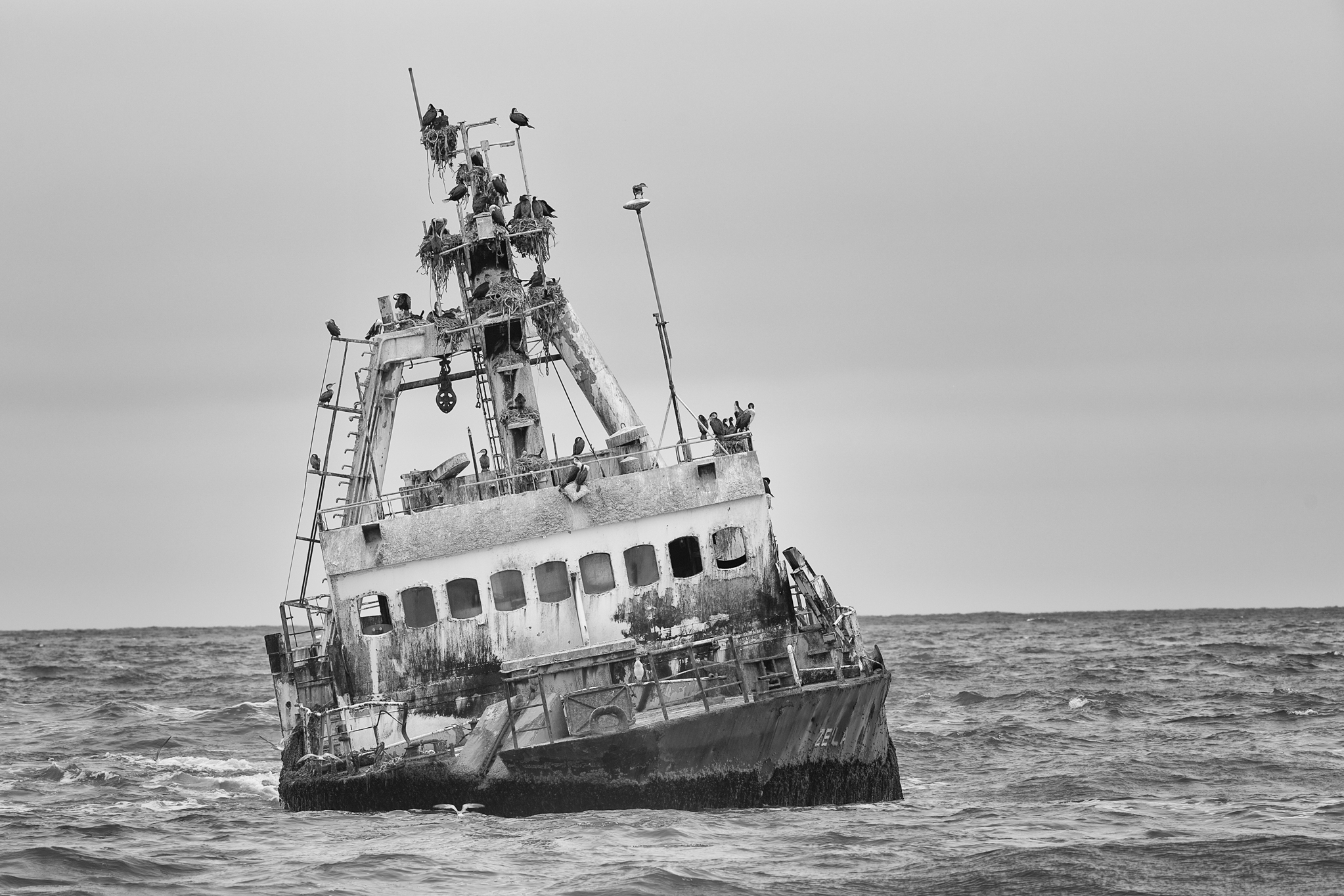
Cape Cross
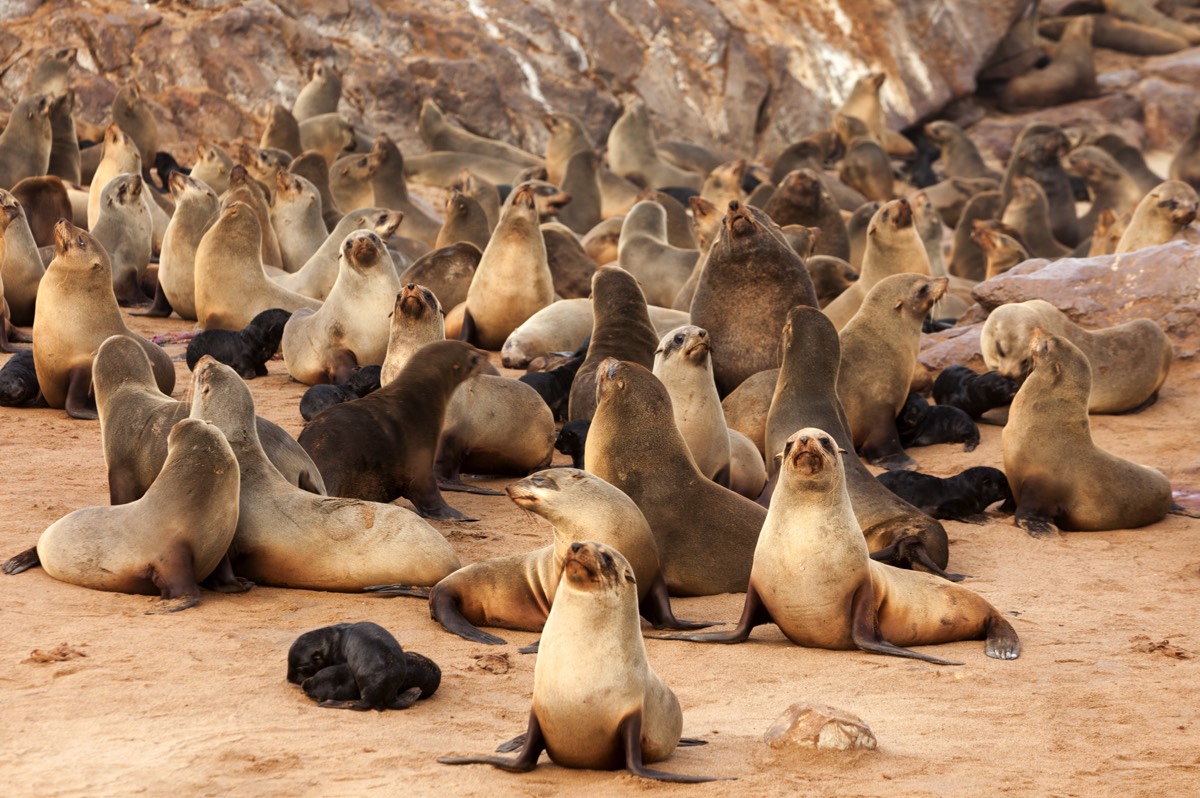
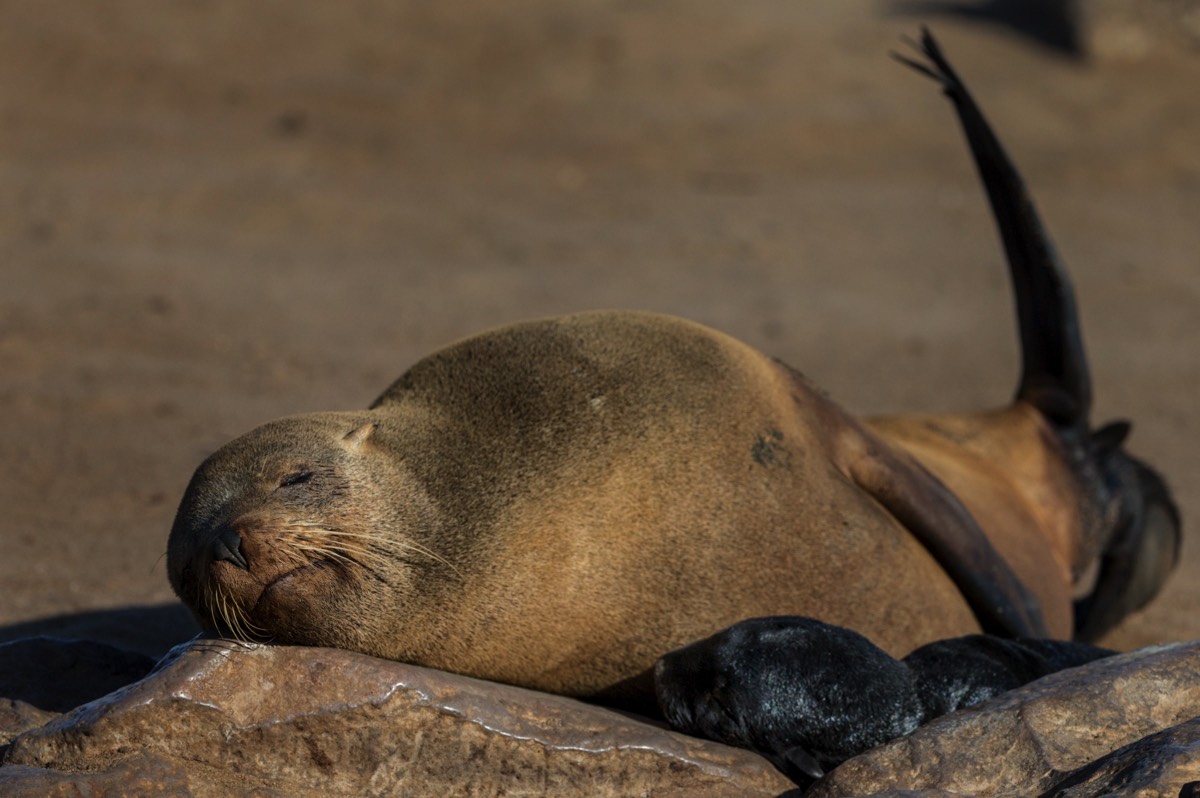
There are cape fur seals along the whole Namibian coast. Often we would find them lying on the sand and think they had been washed up dead until they suddenly came to life and rushed off into the surf. Clearly rest is needed between surfing and fishing in these strong and ferocious seas! They are skittish and it is difficult to get close as they rush back to the water as soon as they become aware of you. And they are surprisingly fast for animals with no legs! Bobbing backsides are therefore the most common photo opportunities.
It is for this reason that, despite the ubiquitous nature of seals on the Namibian coast, Cape Cross, north of Hentjies Bay, drew us for some serious seal time. Here is a permanent colony where they come to mate and pup and so they are in the same place most of the time. They come in large numbers and , because of all the visitors, they have become somewhat habituated to people and will not rush off for the water at the first sight of us. This is helped by the fact that the Namibian Wildlife Reserves have built a boardwalk and fence to separate the seals and people and the seals seem quite happy to lie right up against, and under, the fence even with groups of seal watchers tramping up and down.
During seal pupping the colony is alive with seal mums and pups, and some really huge males hopeful for some early nookie! So it's a scene of not so organized chaos really. Pity the small pup who gets rode over by all the activity. In amongst the seals, seagulls, jackals and hyenas are also having a bonanza scavenging the placentas and the dead pups. The smell is ripe with undertones of decomposition and decay and that is an understatement. We are used to bad smells but this is up there amongst the worst!
Although cold as the sun goes down, the wind did eventually die down and we had a fantastic night there alone, (apart from a million seals), under the stars. We cannot recommend the camp site at the reserve highly enough. It is very basic, bleak and open to the elements but being in the camp site means there is no closing time and so you can stay with the seals all night if you want, and have the stomach for the smell! We were content with the early morning and late afternoon, fabulous light and crashing surf. Dudley had to fight off one enterprising seal who thought he should commandeer the boardwalk for his new territory. A new use for a tripod, seal taming!
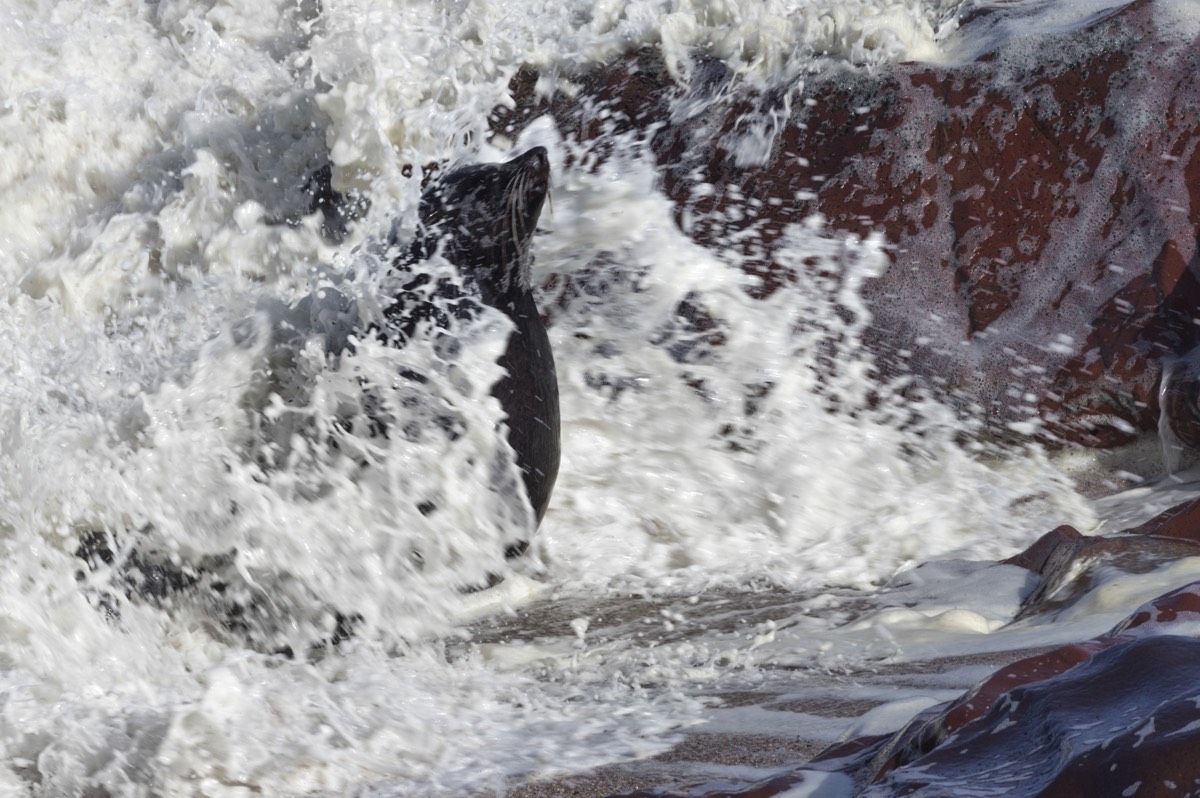
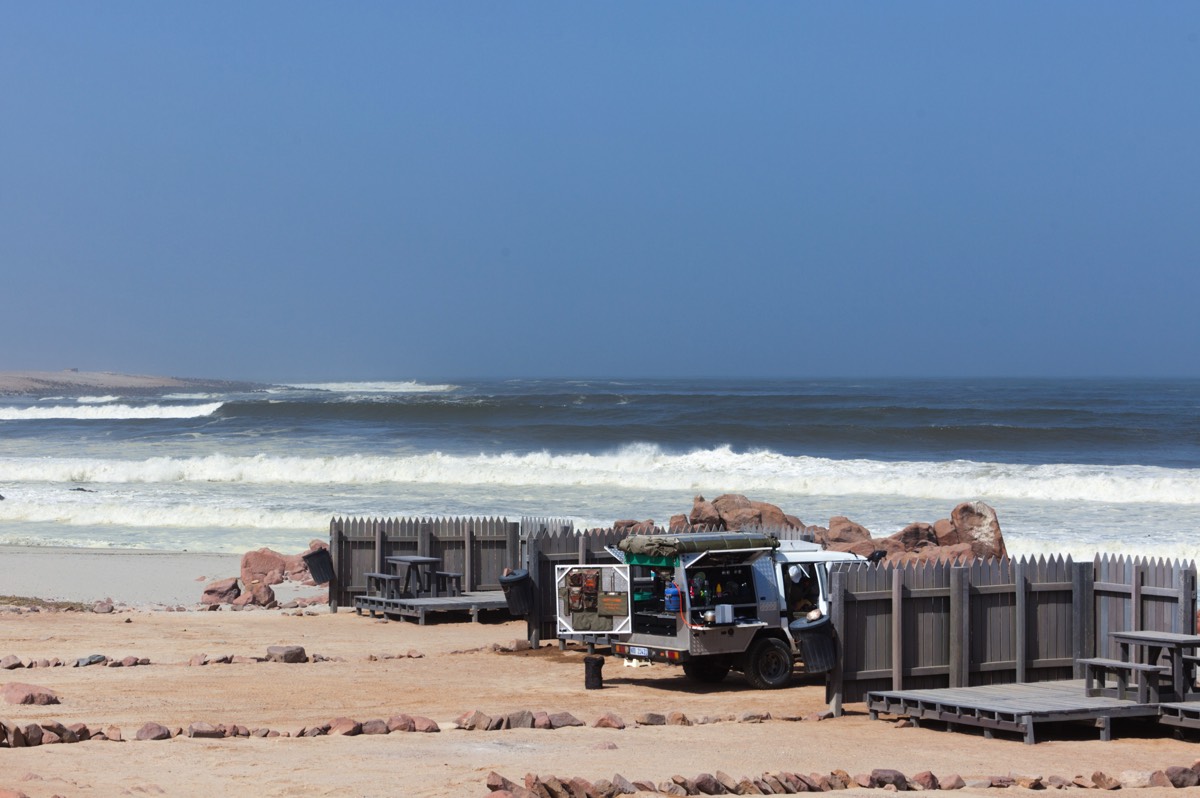
Terrace Bay
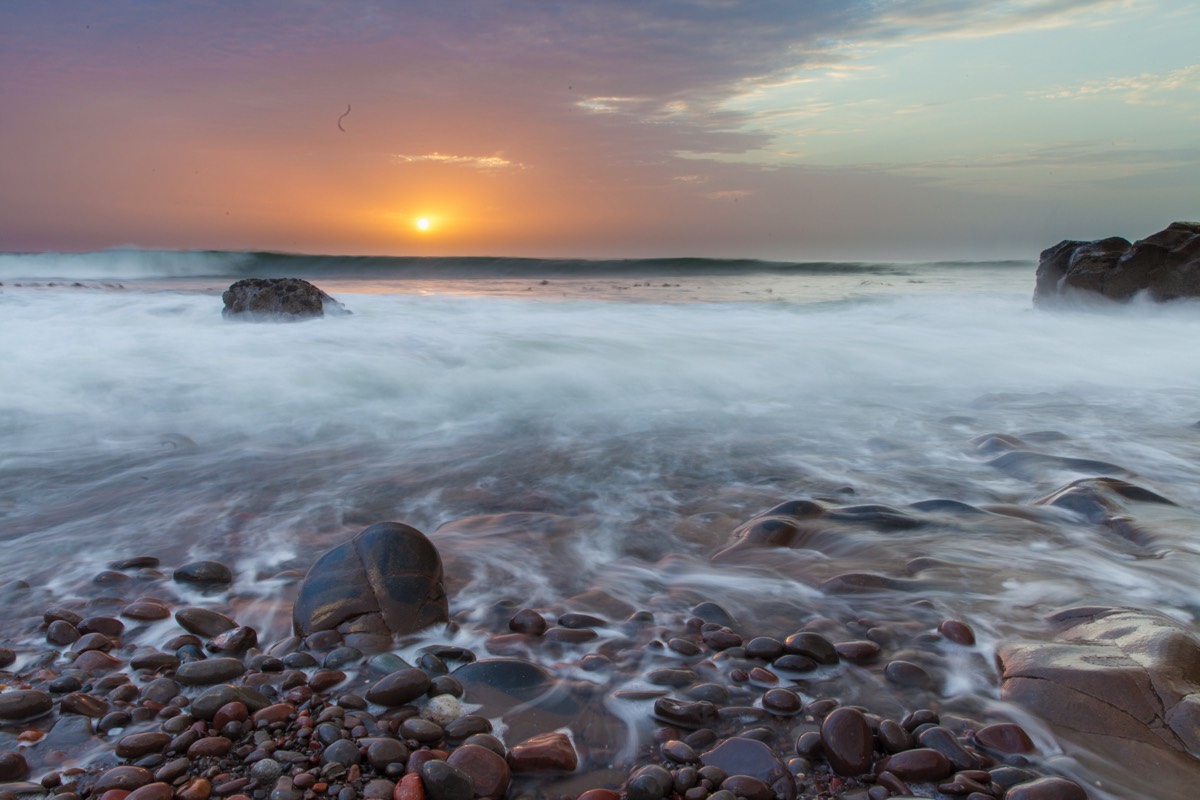
The skeleton coast park is split into north and south. The north remains the exclusive preserve of the high end lodges and fly in safaris but the southern end, stretching from the Ugab river mouth to Terrace Bay, holds a wealth of interest and bleak beauty.
Terrace bay is the northern most point for self drive. It is in the site of an old diamond mine and the old buildings have been loosely adapted to house the camp. It retains a desolate and run down air, which is belied by the rather high end price for a nights lodging, but it does come with breakfast and dinner and a respite from the cutting cold winds off the sea. The old mine buildings are historically interesting and the birds flocked to the roof of the generator shed to spend the night.
We were lucky to get a nights stay here and only after the guard at the entrance gate pulled a few strings. It has become an increasing observation as we travel in Namibia that the default position, especially of municipal or government run places, is that they are full up. This is despite finding hardly anyone there when you finally wheedle your way in. Namibians we have met on our travels claim this is an underlying laziness of the government employees who get paid whether or not. Anyway we have learnt, even when turned down, to keep asking until someone lets us in. And so it was we found ourselves en route to Terrace Bay.
The visit was very worth while, despite getting stuck in the sand as we tried the silky sea exposures and almost missing supper, a surprisingly good 4 course banquet I may add.
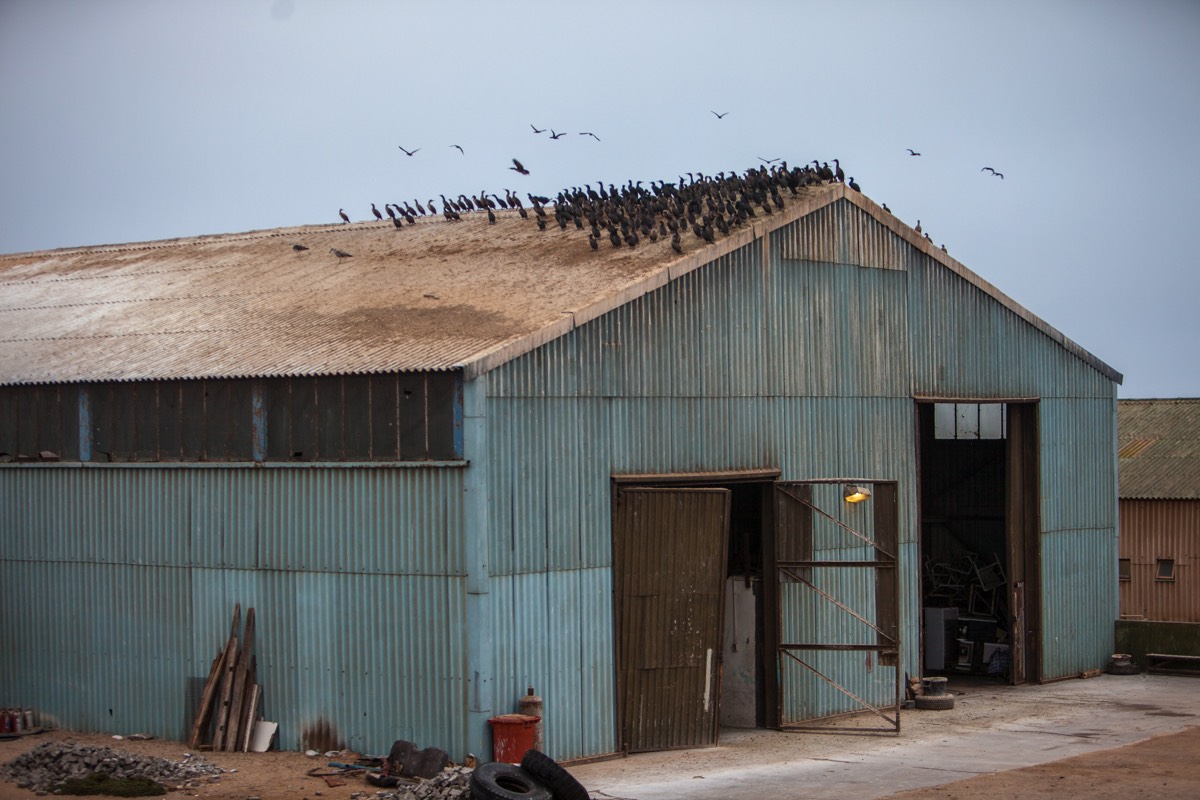
Uniab River
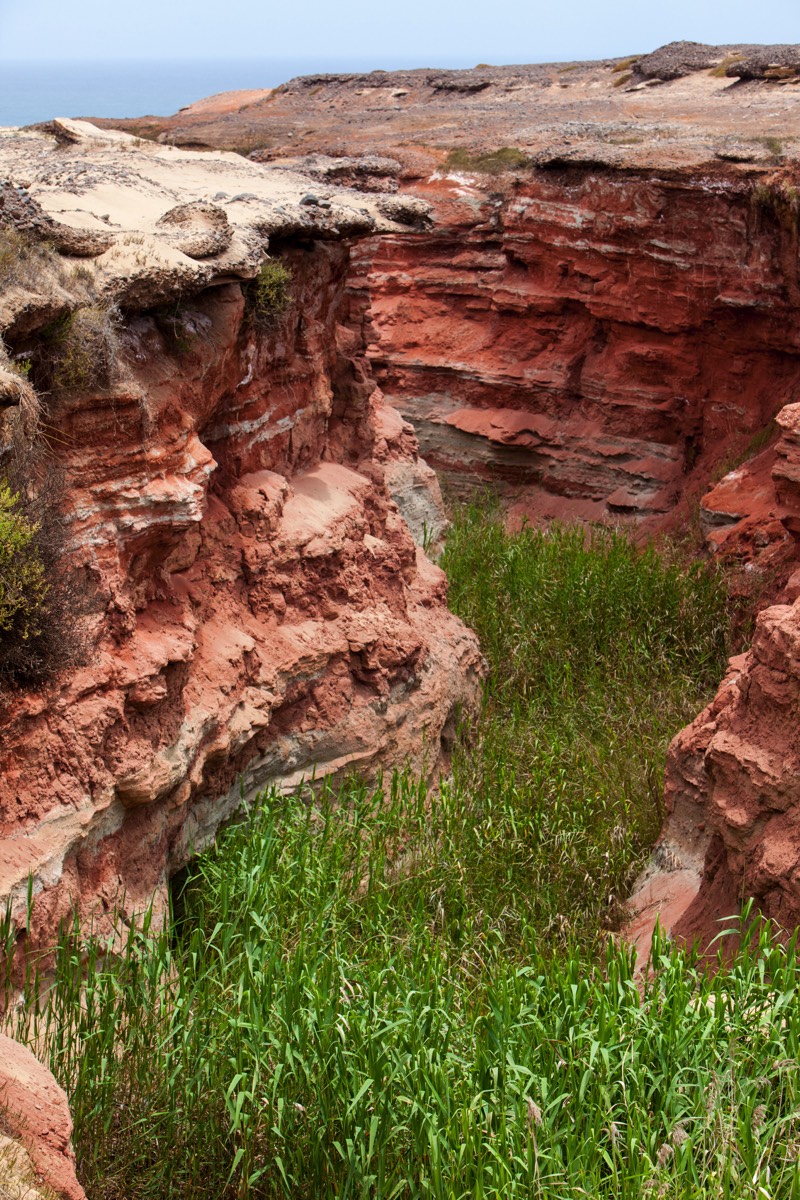

The skeleton coast is criscrossed by many rivers making their way to the sea from the Kaokaveld and Damara mountains.
Most of these are dry river beds and the only indication of their presence is in depressions between the dunes, and an increase in scrub vegetation. There is water in these rivers, just underground for the most part, flowing infrequently if at all. The Uniab, to the North, flows once a year (some years) and has some small pools which persist in one tributary as an attraction for water birds. It feeds an incredible small water fall just by the beach. Imagine that, a waterfall in the desert surrounded by steep red rock, like a crack in the earths surface in the middle of a desert plain.
Looking at the jackal, hyena and antelope tracks it's no secret to the wildlife. Once upon a time lion also roamed this coast line, usually travelling there down the river beds.
I am also sure the green vegetation and trickling waterfall would be a welcome sight for any shipwrecked sailor. More like a mirage than reality. Perhaps the only place you may expect to survive and find a way out with water and food.
One of the main reasons we were so persistent about getting to Terrace Bay was because you cannot otherwise access this area of the park. If you have no booking you are not allowed to turn North, allowing exploration of the Uniab. It was well worth the effort.
Ships and Shipwrecks
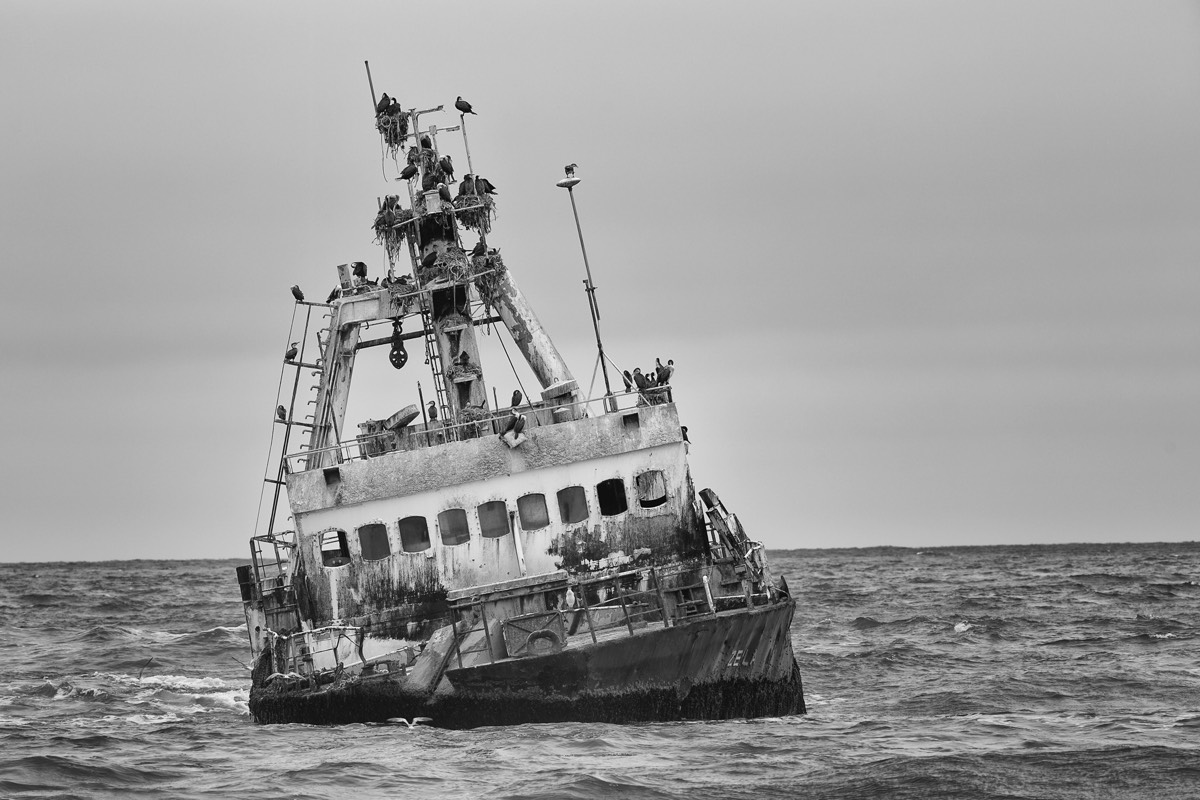
Well, this is the skeleton coast after all and we eagerly scanned the horizons for the outline of a beached vessel, imagining the coast line dotted with Spanish galleons. We were swiftly disillusioned. After following the coordinates for the 5th shipwreck on T4A (and getting stuck in sand again! ) it became clear that most of these points marked the site of a previous wreck, but all physical evidence was long gone. I am sure, had we considered the likely effect of the harsh winds and weather, it would have come as no surprise.
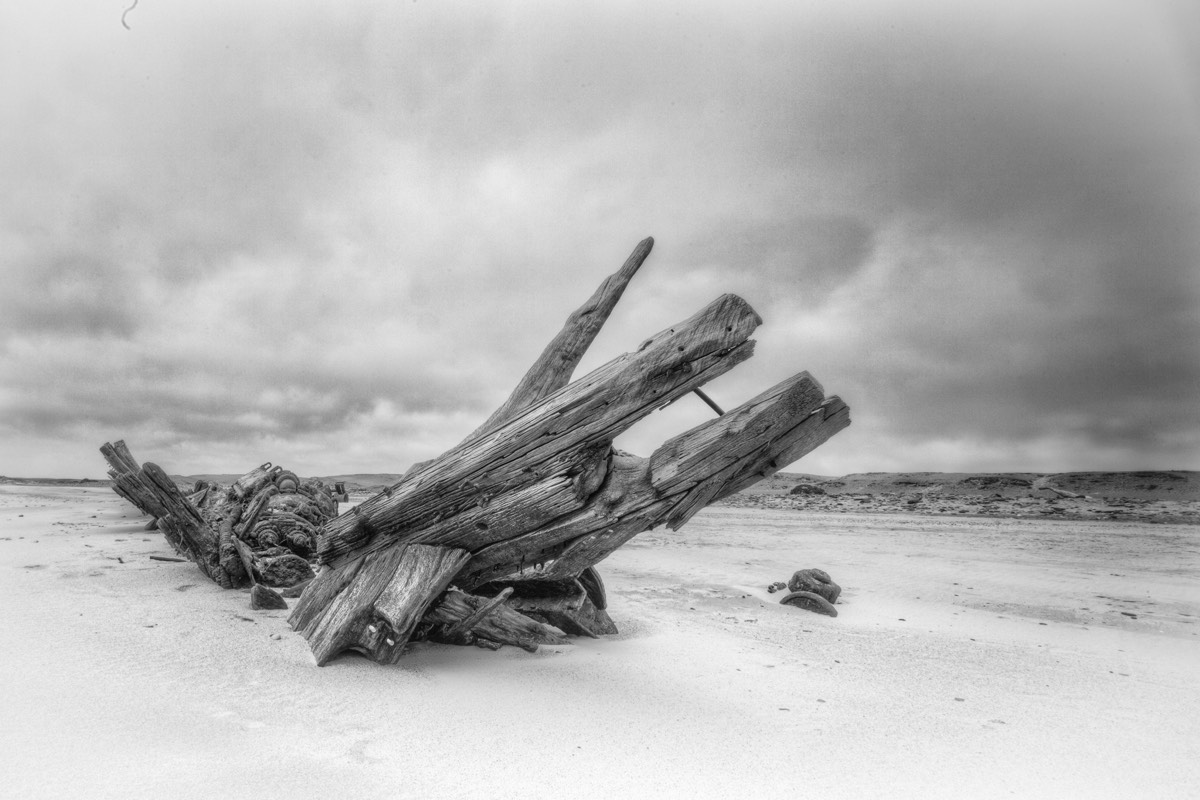
The wreckage simply does not last long on this coast, buried in sand or collapsed by the sea and few iconic images remain of the once great vessels, only a few rusting and decaying hulls and shards are found to justify the continued use of the name. However let's face it, if they were easy to find would you still appreciate the magic?
I can only report we visited every shipwreck site on T4A and collected photos of anything we could reasonably identify as wreckage. Of course in the northern section of the park, where the wealthy tourists go, they probably have Spanish galleons galore! I will stop there for fear of sounding whiney!
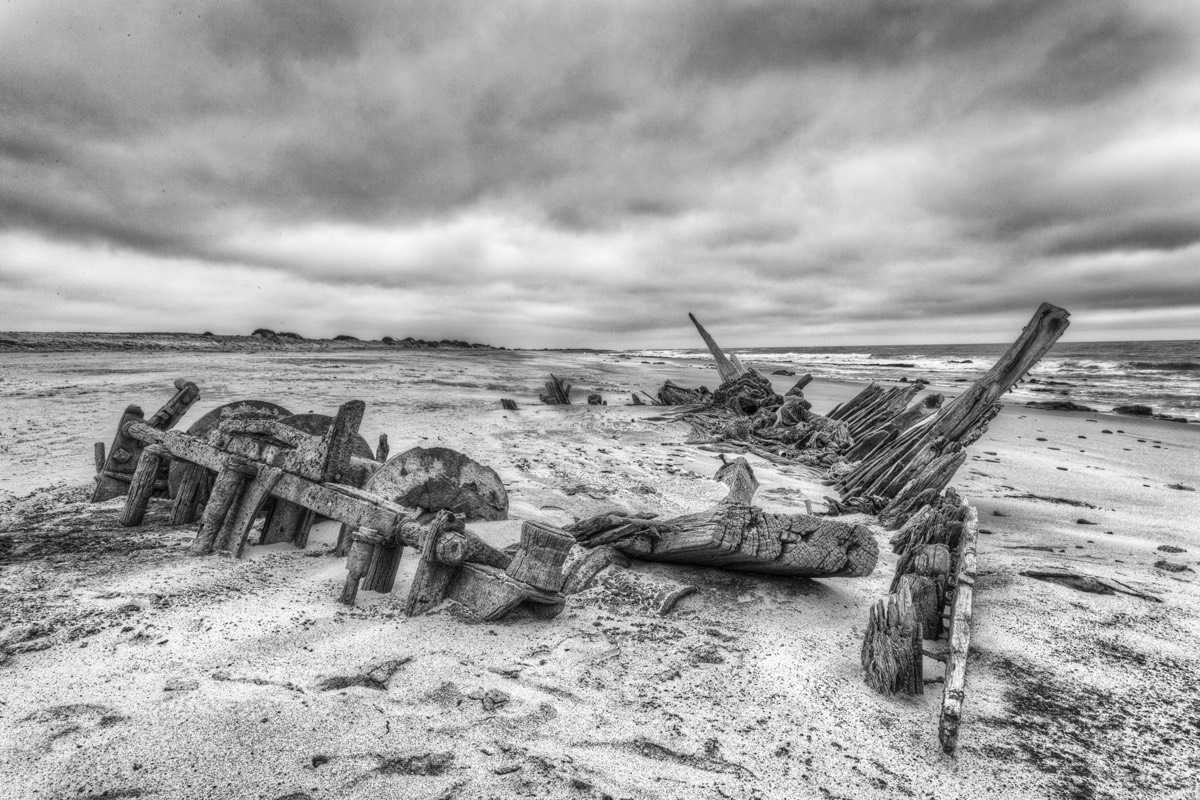
Mines And More Mines
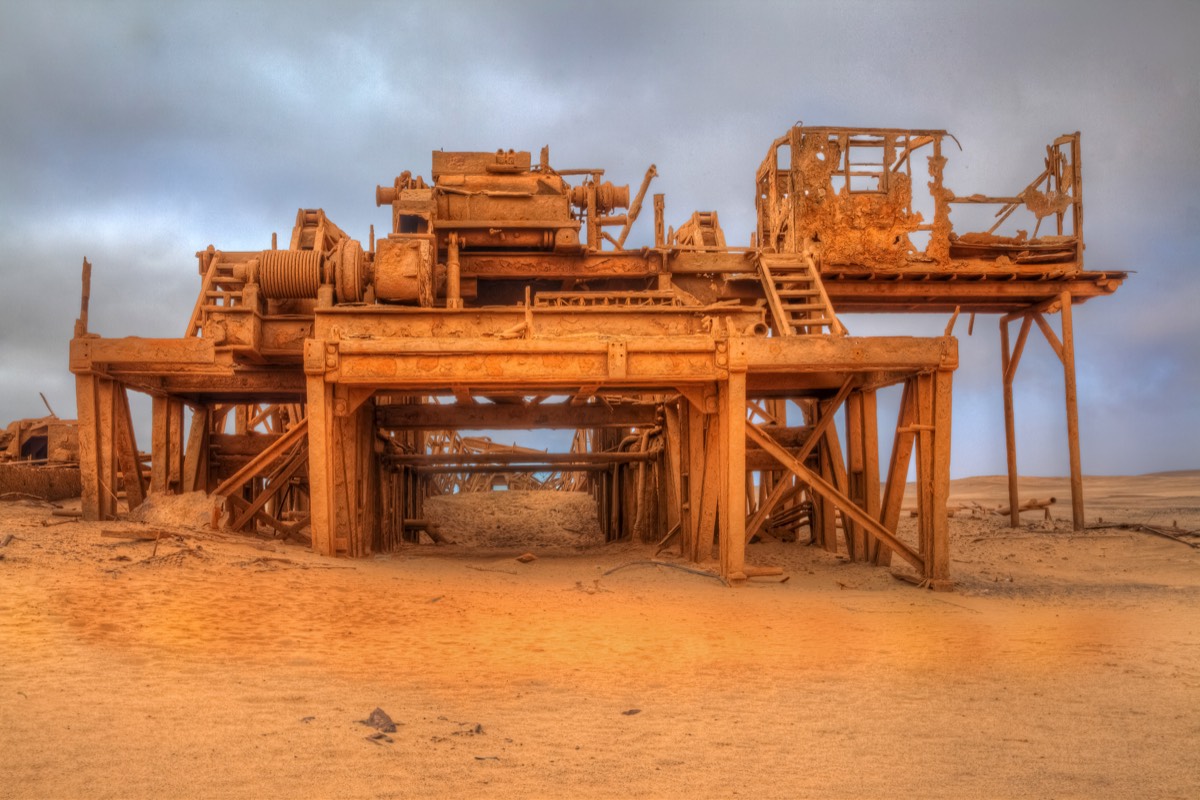
It seems the history of the skeleton coast is dotted with mining disasters, a fact we are very happy about. The remains of diamond mines can be seen at Terrace Bay and Toscanini but neither seem to have survived to financial viability. Interestingly we were later told that both mines were a scam and an entrepreneur called Du Preez seeded the areas of Terrace Bay and Toscanini with diamonds to fool investors into developing the mining operations under which he intended to profit. Who knows! Now they add texture to the landscape with scenically rusted equipment left on site for the desert to sculpt and the birds to perch.
Further south , close to Swakopmund, there is a uranium mine called Rossing. This does seem to be active and viable and there is controversy about its water use when Swakopmund is suffering from serious water restrictions. Apparently the life of a uranium mine is only about 10 years so the argument is that the water for the mine will be re diverted back to Swakopmund in time, with overall benefit to the town. In the mean time the mine offers tours twice a month to engage in some much needed PR. We have not visited (yet) but the reports sound impressive with a massive open cast working dwarfing the trucks like dinky toys. Photo op? Maybe but enough industrial art for now, let's return to the natural stuff.
